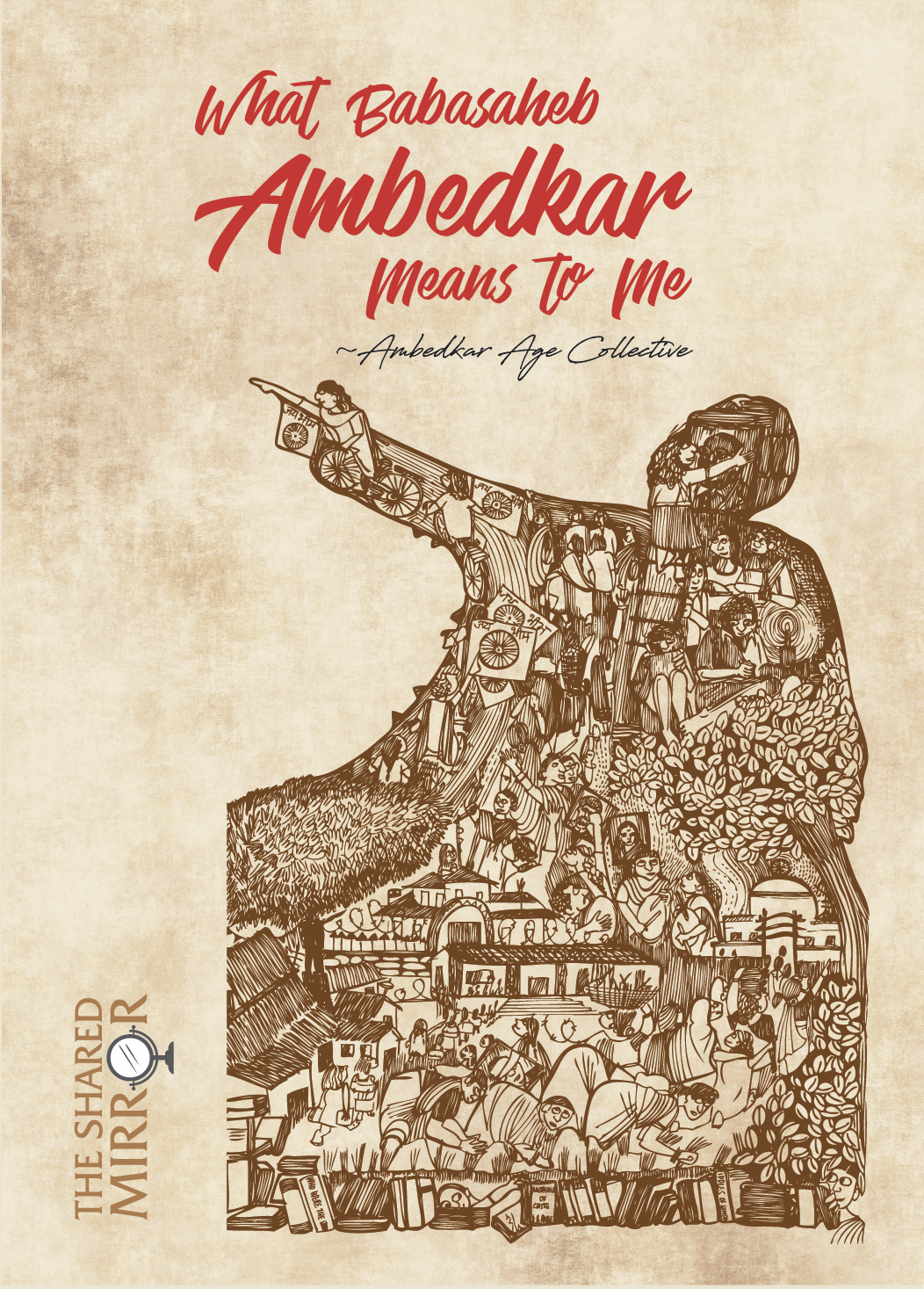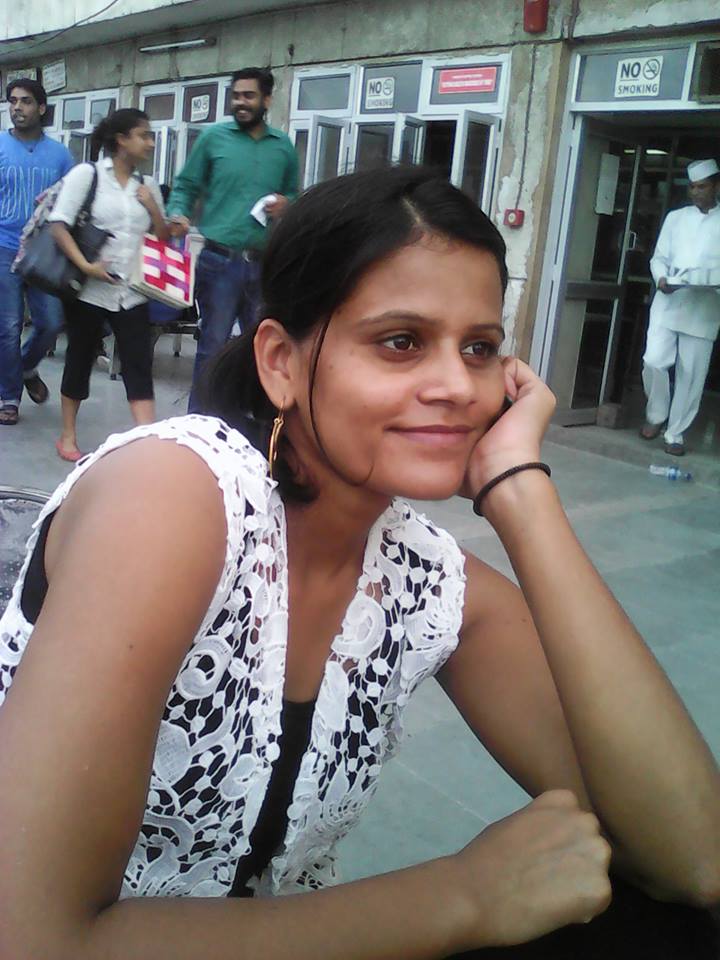Sruthi Herbert
 “She is so fair that to look at her, you wouldn’t say she is a SC girl”.
“She is so fair that to look at her, you wouldn’t say she is a SC girl”.
The ‘Dark is Beautiful’ campaign got a big fillip with its endorsement by Nandita Das, who no doubt, has experienced the bias that the movie industry has against dark-skinned people. One kept having nagging doubts despite generally liking the campaign as it questioned the cultural premium placed on fair skin. So it was a relief to findAnjali Rajoria writing in Savari about why she did not support the campaign. Some of the stingingly ignorant comments, especially one that accuses her of casteism, have provoked me into writing this response.
The website of the ‘Dark is Beautiful‘ campaign states that it “challenges the belief that the value and beauty of people (in India and worldwide), is determined by the fairness of their skin. This belief, shaped by societal attitudes and reinforced by media messages, is corroding the self-worth of countless people, young and old”.
The misgivings one had about this campaign resolved itself for a good part after reading this. It was problematic for me.
I would like to start by trying to understand the first part: “the campaign challenges the belief that the value and beauty of people (in India and worldwide), is determined by the fairness of their skin”. In India, the ‘value’ of people’ and their ‘beauty’ cannot be so easily and automatically connected. If that were so, then one would not have heard so often that ‘She is so fair that to look at her, one wouldn’t say she is an SC girl”. I am probably just the shade of Nandita Das, may be even a shade darker. And I recall getting a marriage proposal from an upper caste Syrian Christian family who assumed by my looks that I must be a Syrian Christian, (fyi, I am a Latin Catholic, immediately connected in Kerala as descended from the noble fisherfolk although we have left that job at least two generations ago).
This automatic correlation of skin colour with caste is a lived reality for most people in my part of the world. How many factors contribute to the self-worth of women in a society that is structured around many kinds of oppression? To single out skin colour alone as the single most important factor that contributes to self-worth would be, from a sociological view point, a blunder and from the viewpoint of lived experience, a lie.
 I think that for many of us, who are dark-skinned non-‘upper’ caste women, value, beauty, and self-worth are not connected by that single parameter called ‘skin colour’ but more clearly by that single parameter called ‘caste’. I think this is the point Anjali argues by saying that when someone privileged like Nandita Das campaigns that ‘Dark is Beautiful’, her position is more of convenience, one that wants to extend her privileges. The name of the campaign, a play on words uncannily resembling the ‘Black is Beautiful’ campaign, is nothing like the Black is Beautiful campaign which was aimed at addressing the complex intersections of the popular notions of beauty and race. Indeed, ‘Dark is Beautiful’ is a campaign with no political teeth, and except superficially it does not speak to many dark-skinned women like me.
I think that for many of us, who are dark-skinned non-‘upper’ caste women, value, beauty, and self-worth are not connected by that single parameter called ‘skin colour’ but more clearly by that single parameter called ‘caste’. I think this is the point Anjali argues by saying that when someone privileged like Nandita Das campaigns that ‘Dark is Beautiful’, her position is more of convenience, one that wants to extend her privileges. The name of the campaign, a play on words uncannily resembling the ‘Black is Beautiful’ campaign, is nothing like the Black is Beautiful campaign which was aimed at addressing the complex intersections of the popular notions of beauty and race. Indeed, ‘Dark is Beautiful’ is a campaign with no political teeth, and except superficially it does not speak to many dark-skinned women like me.
‘Dark is beautiful’ is simple, in fact, too simple not to have dwelt on the complexity surrounding self-worth, beauty, and skin colour. In fact, beauty or skin colour has hardly the same bearing on self worth on upper caste and non-upper caste women. I have had endless conversations with a close friend about how a very subjective trait like confidence is influenced tremendously by one’s caste, although I am yet to find any work from social psychologists who engage with this topic. If one were only to go by the data on students’ suicides in premier institutes, it is true that caste plays an important role in deciding who gets targeted and who gets broken – not for strength of character, but for lack of positive support – and subjective traits are hugely conditioned by this single reality that determines your identity in this part of the world. I cannot see how self-worth of women is above or beyond this determinant.
I would like to illustrate how ‘dark skin’ and ‘caste’ are linked more organically than what the campaign acknowledges, and how ‘societal attitudes and media messages’ cannot be so easily isolated as to what reinforces the bias towards lighter skin. The South Indian state of Kerala was recently rocked by the ‘Solar Scam‘ in Kerala where the culprits were upper caste, notably two upper caste women. Although, this was not the first, and will not be the last time that women have forayed into criminal territory, the anxieties surrounding this were triggered more by the fact that those implicated were upper caste women, not the ‘kind of women’ whom you would have expected.
This anxiety found its expression most revealingly in the article by the IPS Officer R Sreelekha, where she lamented, ‘Are Karuthammamar on the rise?
The literal translation of Karuthamma is ‘Black woman’, and the allusion she is making is to the heroine in the popular Malayalam novel (and movie) Chemmeen. In this story, Karuthamma is a fisherwoman who dares to love a Muslim man, but marries another man. After the old love is rekindled, the bodies of Karuthamma and her lover wash ashore, both apparently having committed suicide. On the same day, Karuthamma’s husband dies in the sea baiting a shark, thus seemingly validating the belief that a fisherman whose wife strays will perish in the sea. Drawing from this narrative that holds Karuthamma responsible for the tragedy, Sreelekha IPS thinks such women are on the rise, such women in whose hands the family’s welfare and the society’s future are not safe. The casteism in her associating criminality naturally with ‘karuthamma’, the black woman, and wondering whether they were on the rise, even as those implicated in the Solar Scam were fair Nair women, was not lost, was problematised by many in the media, and has been elucidated by A S Ajith Kumar.
 My reason for bringing in this case from Kerala is to illustrate how very easy it is to collapse the categories of women, lower caste, and dark-skinned into a single coherent discourse. When that is not just a real possibility, but an experienced reality, it is foolhardy at best and casteist at worst to ignore the different voices that disagree with a campaign that does not address any of these differences at any level.
My reason for bringing in this case from Kerala is to illustrate how very easy it is to collapse the categories of women, lower caste, and dark-skinned into a single coherent discourse. When that is not just a real possibility, but an experienced reality, it is foolhardy at best and casteist at worst to ignore the different voices that disagree with a campaign that does not address any of these differences at any level.
No, there is no doubt that the commercialization of a cultural preference for light skin colour is a serious problem. Creating space for multiple voices to bring out the complex issues pertaining to skin color was the main point being made in Anjali’s article. I will draw upon Audre Lorde who shed a lot of insight into what rings closest to this ‘Dark is Beautiful’ campaign:
“Institutionalized rejection of difference is an absolute necessity in a profit economy which needs outsiders as surplus people. As members of such an economy, we have all been programmed to respond to the human differences between us with fear and loathing and to handle that difference in one of three ways: ignore it, and if that is not possible, copy it if we think it is dominant, or destroy it if we think it is subordinate. But we have no patterns for relating across our human differences as equals. As a result, those differences have been misnamed and misused in the service of separation and confusion.”*
Reading the intolerant responses to Rajoria’s article which had maintained a respectful and dignified tone, I cannot help thinking how we have no patterns for relating, across our human differences, as equals. I wish, most of all, that she would not be accused of casteism. I wish there were spaces for such articulations that will not be violently attacked. In the absence of this, an upper caste-led campaign to address the profit-based economic order will not dismantle any existing structures. Until such spaces are allowed to exist, and such possibilities for respectful conversation, listening, and learning are not valued and fostered, it would be as Audre Lorde puts it: “The master’s tools will never dismantle the master’s house”.
~
*Audre Lorde, “Age, Race, Class and Sex: Women Redefining Difference“, Paper delivered at the Copeland Colloquium, Amherst College, April 1980 available atwww.clc.wvu.edu/r/download/29781
~~~
Sruthi Herbert is a researcher who seeks to interpret the Indian society from the vantage point of the oppressed and the underprivileged. She is starting her doctoral degree in the School of Oriental and African Studies, University of London, and has previously studied at the Tata Institute of Social Sciences, Mumbai, and the Centre for Development Studies, Thiruvananthapuram.
Cartoon by Unnamati Syama Sundar.



Fairer Aryan invaders came alone, they didn’t bring too many females along with them . Married local women.Local women were attracted to Aryans as it is evident from the story of Shurpankha.
The off spring of their union inherited the local trait of the skin colour and was inherited and distributed in the Mendelian ways.Despite prohibition on inter Caste marriages, the Hardy–Weinberg operated to some extent. That is the reason for Dark colour of the skin amongst many upper Caste.
However, the degradation status of natives due to their skin colour was allowed to percolate in the psyche of the social strata thereby warranting a campaign such as ushered by Nandita Das.
Since the notion of degradation or contempt with its origin in the Caste alienation was associated the skin colour, upper Caste dark colour person became unsuspecting victims of the bias.
Given this, the issuse needs more radical look in order to seek the alleviation of caste bias. First Caste bias has to be targeted for the opinion engineering.
The Caste factors is much more degrading than the skin colour. It is the notion of belonging to a lower Caste that inhibits some Dalit women to held their head high amongst women. The skin factor colour factor comes much later.
So the focus should be on healthy skin is beautiful skin.
And more importantly, Dalits, irrespective of their type of skin colour, must learn to held their head high in the company of upper Caste people. If upper caste women responds favorably to the anti Caste campaign, the notion of self esteem associated with skin colour will go away.
Healthy skin has been beautiful in India before the Aryan invasion. `Black is not beautiful’ is the post Aryan invasion notion. To address this problem, this fact must not be ignored. It would be futile.
Another useless response to the Das campaign that completely misses the point. I don’t think Das would disagree with any of this. Just to attack Das for her privilege or her caste seems both unthinking but also uttertly counterproductive. Why have Dalit and OBC women been so quiet about this issue in the first place? Why did it take a Das to raise it? Where were Rajoria and Herbert hiding up to now and why do they have to articulate their critique only as pulling down the critique of someone else only because she is uppercaste. This only shows the emptiness of most caste-based critique these days.
“Why have Dalit and OBC women been so quiet about this issue in the first place?”
Really? Did you actually mean to ask why Dalits are quiet?
And critiquing only happens when there is a subject matter. We are allowed to question even the most “sacrosanct” actions. A campaign like this should take into consideration a lot of other factors, or otherwise it doesn’t speak for the whole (assuming that’s the intention). The campaign is a great idea but means it has chosen is extremely reductionist: http://www.newsyaps.com/black-is-the-new-black-where-the-dark-is-beautiful-campaign-fails/46987/
Moving on to your defence of Das, who I believe is only a face of the campaign, Rajoria mentions the Bhanwari Devi case where I think the actress’ actions were hypocritical. It is better not to take up an issue than to make farce out of it: http://archive.tehelka.com/story_main34.asp?filename=hub131007A_MIGHTY.asp
I do not agree with your assumption that ‘colour’ affects upper caste women and non-upper caste women differently. Just like the example of the proposal you highlighted in your article, I have heard of upper caste women who have been unable to find grooms because they are dark skinned (and most people in their caste are fair). Such bias based on colour with an underlying caste bias affects all and isn’t a situation unique to non upper caste women. I do agree with you that if the Dark is beautiful campaign had interlinked indians’ colour bias with casteism, it would have given a fuller representation of the different dimensions to the issue. But attacking Nandita Das or the campaign’s motives on this ground alone is wholly unjustified
I found the piece comprehensive. The two very important points made here are:
1. Forgetting Caste,a conspicuous identity marker in India, in a debate on a subject like complexion, reduces the validity of the movement here. If one sees the matrimonial page, the caste comes across as an all encompassing category; complexion and other physically acquired or socially achieved attributes come later. 2. ‘Dark is beautiful’, is not a very good title. Besides the ignorance of repulsive connotations it gives rise to(not writer’s thought), it fails to emulate the spirit and inclusiveness of the movement ‘Black is beautiful’ from where this must have come.
Even if it is precisely a movement against the neo-liberal logic of advertising and media industry, it seriously lacks on the discussion of other important markers, what could have made this a stronger movement and sociologically more appropriate in India. Mere replication of the West is not going to address the ills here, as even good intentioned movements like this go on to deprive themselves of addressing the grossly entangled realities here.
The underlying issue is the caste system and its implications on society. Get rid of it. Race and color are irrational derivatives or subjugates. The country faces many issues based on the caste system alone. By picking the ones that rather needed more of a conviction of this type would’ve added justice. To be specific, rape victims bearing the brunt of unfair societal treatments based on caste.
Although the author takes an articulated approach on how caste system jolts individuality out or disrupts one’s inner core, focus should have been on a different example and not on a genuine campaign. Is Dark Beautiful? Yes it is indeed. If it is, the question remains to the author’s perception from her article, as to why the notion of caste-based discrimination crop up with Nandita Das’s portrayal. Skin color should not be the highlight. Das’s campaign was speaking out against unjustified hindrance to talents brought by it. It shouldn’t be correlated to caste system and better if not mixed. Instead, it should be correlated to victimized individuals formed by a female majority. The campaign stays true to that purpose.
The discourse that creates a binary opposition between beauty and the fact of being a Dalit woman extends to other spheres as well. So often have I encountered this phrase , “In spite of being a Dalit you have read so much . ..so what you are a Dalit , you are so good ,innocent, intelligent …And the worst thing is when your well wishers suggest that you can easily change your surname and pass off as a “normal” person.Clearly ,Brahmanism has made people so dumb .